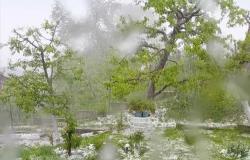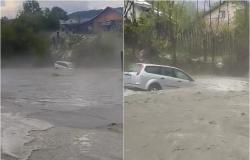April 24, 2024
A team of researchers from the Babeș Bolyai University in Cluj-Napoca warns that the thermal rehabilitation of buildings, financed by the authorities, will contribute to increasing the level of radon in buildings, endangering children and employees who spend half the day in these spaces. An extremely dangerous gas, which can cause serious illnesses, was detected in a quarter of the educational institutions in 16 counties.
The announcement was made the other day during a press conference held by Alexandra Cucoş Dinu, project manager at the Faculty of Environmental Science and Engineering of Babeș-Bolyai University, Cluj Napoca. According to the specialist, the discovery was made on the occasion of the creation of the first radon map in Romania showing the risk areas at the national level.
The level of radon concentration that has exceeded the permitted threshold can be found in the counties of Alba, Arad, Bigor, Bistrita Năsăud, Brașov, Caraș Severin, Cluj Napoca, Covasna, Harghita, Hunedoara, Maramureș, Mureș, Sibiu, Sălaj, Satu-Mare and Timiș .
It’s about high concentrations of radon, a radioactive gas that accumulates in buildings and is the second leading cause of lung cancer after smoking. Although radon itself is a gas, its radioactive decay products are not gases, attaching to dust particles in the air. If we inhale decay products, the radiation they emit can damage our lungs. The gas was detected following a research carried out by specialists from Babeș-Bolyai University in Cluj Napoca. They measured radon concentrations in nearly 5,000 schools and kindergartens, institutions and administrative buildings in 25 counties. It was found that in a quarter of the schools and kindergartens in 16 counties there is a high concentration of radon, an extremely dangerous gas, which the WHO has warned is among the risk factors for lung cancer, a disease that is experiencing an alarming increase.
Radon map
map source UBB Cluj – LiRaCC Laboratory.
A team of researchers from the Faculty of Environmental Science and Engineering and the Faculty of Biology and Geology carried out the first large-scale mapping of radon in water and soil in Romania, the study was recently published in the academic journal Science of The Total Environment.
From the map of radon in water made by UBB researchers, it can be seen that there is no significant radiological problem from the perspective of inhaled / ingested radon due to water. Furthermore, the radon concentration in the water would insignificantly influence the indoor radon concentration, even if the water source is inside the house.
The soil radon map suggests that strictly soil radon concentration measurements, without additional information (geology, permeability, construction type, etc.), are not a satisfactory predictive indicator of indoor radon.
All the researches were carried out within the “Constantin Cosma” Radon Testing Laboratory – LiRaCC within the Babeș-Bolyai University, the only authorized complex laboratory in Romania in the field of radon, having as its main activity the measurement of the concentration of radon in samples from environmental factors (air , water, soil), by adopting national and European standards in current practice within the test procedures. LiRaCC operates within the Faculty of Environmental Science and Engineering, as a recognition of the late Prof. Univ. Dr. Constantin Cosma, pioneer in radon research and trainer of the team of specialists. The experience and international recognition of over 17 years of the research team have consolidated within LiRaCC a core of high-level scientific competence in the field of radon research. Also, the unique research infrastructure at our disposal, supported on the basis of 18 national/international research projects, as well as the implementation of internal procedures for quality assurance, allow laboratory analyzes and determinations to be carried out, with the accuracy required by national and international norms in force, according to the newsubb website.
The team from Babeș Bolyai University has been researching the effects of radon for more than 20 years and says it has raised numerous alarm signals, especially in recent years, related to the increased level of radon in public buildings such as kindergartens and schools.
In homes, the sources of radon can be emanations from the soil or building materials, water used for domestic use or gas used for heating or cooking. Radon is a gas that humans cannot perceive with their senses, and this contributes to the associated risks. The gas is colorless and odorless, and for this reason you cannot tell when this gas is released into the atmosphere. Once this gas is present in the air, it is inhaled into the lungs, where it can increase the risk of lung cancer.
Because we are talking about a gas that is practically not felt, this makes it practically difficult to identify it. To help the beneficiaries, specialized institutions have mapped the areas of the world to find out which are the spaces with the highest radon gas content.
Even if they are not complete, they are updated at certain periods of time so that we can have an overview of this danger. For example, in our country, most of the western area is contaminated with radon gas, but not only, according to the isotherm siter.
Tags: Dangerous gas educational institutions Mures News Mures News Targu mures
-






